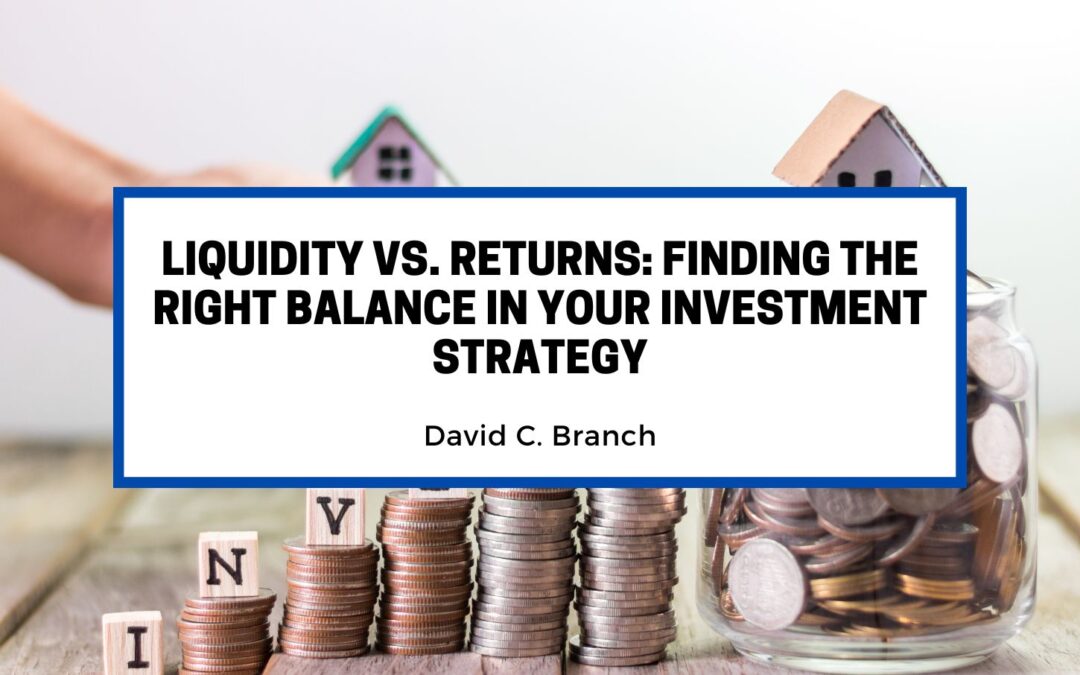When investing, one of the most critical yet often overlooked considerations is the trade-off between liquidity and returns. Liquidity refers to how easily an asset can be converted into cash without significantly impacting its value. On the other hand, returns represent the potential gains an investment can generate over time. Striking the right balance between these two factors is essential for building a resilient and effective investment strategy.
Understanding Liquidity and Returns
Liquidity varies across different asset classes. Cash and money market funds are highly liquid, which can be quickly accessed with minimal price fluctuation. Stocks and bonds fall in the mid-range of liquidity, while real estate, private equity, and alternative investments like hedge funds are considered illiquid due to longer holding periods and limited marketability.
Generally, the more liquid an investment, the lower the potential return. This is because liquidity comes with reduced risk—investors can exit their positions swiftly if needed. Conversely, less liquid assets often offer higher returns as compensation for the risk and time required to access the capital.
Why Liquidity Matters
Liquidity plays a crucial role in financial stability and flexibility. Investors need a certain level of liquid assets to cover unexpected expenses, economic downturns, or sudden investment opportunities. A lack of liquidity can lead to forced asset sales at unfavorable prices, resulting in financial losses.
For example, during market downturns, investors with an overly illiquid portfolio may struggle to meet cash needs without selling long-term investments at a loss. Similarly, retirees relying on investment income need access to liquid assets to sustain their living expenses.
Why Returns Matter
While liquidity ensures short-term financial security, returns drive long-term wealth accumulation. Over time, investments with higher returns, such as equities and real estate, contribute to capital growth and financial independence. Investors who focus too much on liquidity risk missing out on wealth-building opportunities that require a longer commitment.
Striking the Right Balance
Finding the optimal mix of liquidity and returns depends on several factors, including risk tolerance, investment horizon, and financial goals. Here are some strategies to help balance these elements effectively:
- Establish an Emergency Fund – Before allocating capital to long-term investments, ensure a liquid emergency fund covers at least three to six months of expenses.
- Diversify Across Liquidity Levels – A well-structured portfolio includes a mix of liquid assets (cash, bonds), semi-liquid assets (stocks, ETFs), and illiquid assets (real estate, private equity) to optimize stability and returns.
- Align Investments with Financial Goals – Short-term goals (buying a home, paying tuition) require liquid investments. In contrast, long-term goals (retirement, wealth accumulation) can tolerate lower liquidity in exchange for higher returns.
- Rebalance Periodically – Market conditions and personal financial needs change over time. Regularly reassess your asset allocation to maintain an appropriate liquidity-to-returns ratio.
Conclusion
Achieving financial success requires balancing liquidity and returns based on individual circumstances. While liquidity ensures financial flexibility, maximizing returns is essential for long-term growth. A thoughtful, diversified approach can help investors navigate economic uncertainties while capitalizing on profitable opportunities. By carefully assessing liquidity needs and return potential, investors can build a portfolio that delivers both stability and financial growth over time.

